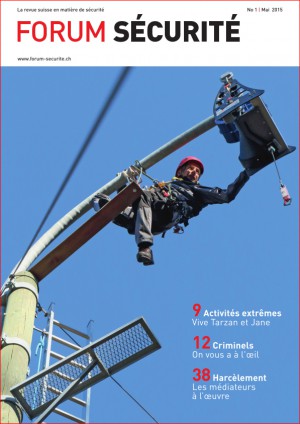ELECTROHYPERSENSITIVITY (EHS): IS IT REAL? DOES IT EXIST?
By Evelyn Savarin
Cellular Phone Task Force
EHS was first identified in the Russian research of 1950s and 60s under the term ‘Microwave syndrome’. The term described a litany of symptoms and illnesses observed in Russian workers occupationally exposed to higher levels of electromagnetic/ microwave radiation. The first of many subsequent critiques and reports on the Russian Studies was the Dodge Report 1969 and later by Glaser, 1971. Their reports documented over 2,300 Russian studies and
references that identified a plethora of symptoms and illnesses ranging from those frequently ascribed to EMF exposure as sleep disorders, headaches, depression, dizziness, nervousness, memory problems, digestion, heart irregularities, tinnitus, to the more obscure, such as trembling eyelids, changes in olfactory sensitivity, loss of hair as well as many bio-chemical
effects. (1,2)
Based on many of those early studies, most East European countries, Russia and China adopted RF emission standards 1,000 to 10,000 times lower than the West. The Eastern Countries believed lower emission thresholds were justified in order to protect the population from the Biological effects that was evidenced in the Eastern research at the time. Meanwhile the West justified their higher RF safety thresholds simply using a safety factor from the physical heating
health effects of RF/microwave emission. According to Western science, physical heating was the only definitive health risk from RF /microwave emission observed in the research up to that time. (3)
Reports generated by Western governments have been critical of the Russian and Eurasian lower Safety standards and the efficacy of their original research. The West’s assessment of the Russian studies did not demonstrate a rationale for the 1,000 times lower Eastern Emission Standards. (4) However a later 1979 more obscure government paper, the McCree Report, did in fact confirm Euro-Soviet research was valid. (5) Despite that confirmation, American and Western countries never found a justification to change to our 1,000 times higher RF emission standards.4Interestingly, while US and other Western countries held dear to the higher emission standards based on the ‘Heating’ of tissue rationale, the US Military at the same time was conveniently looking into offensive RF — electromagnetic weaponry that could disrupt bodily functions and alter behavior at below heating thresholds. (15)
___________________________________________________________________________
In recent years conflicting evidence has pitted Industry against independently-sponsored research as to whether Electrohypersensitivity (EHS) is a real or imagined disorder. In industry-supported research, EHS is considered an idiopathic disorder. Essentially, a series of health complaints looking for a cause. This research conveys the opinion that patients reporting EHS have wrongly associated electromagnetic fields (EMFs) as the cause of their symptoms and disabilities. Instead those scientists subscribe it to psychosomatic reasons. (6)
From a series of provocation studies,industry-supported scientists have come to the conclusion that individuals self reporting EHS cannot detect whether an RF signal is on or off with any degree of accuracy, and do not show any biological differences from non-reporting individuals during exposure. (6) The scientists conducting the studies automatically assumed that to be legitimately designated as electrohypersensitive, self proclaimed EHS patients should show a clear response distinction in those two areas from the non-reporting group.
Much of those provocation studies were heavily funded by Mobile Telephone carriers 7 and led by James Rubin PhD, a psychologist teaching at King’s College in London.(6)
Closer examination on the methodology of these studies shows a disregard for science,
common sense and a clear obfuscation and misinterpretation of the results
Common sense dictates that after prolonged or repeated exposure to a stimulant or depressant the body reduces its initial ability to respond or detect the stimulus in the same original manner., i.e. smoking, alcohol, drugs, smells etc. Instead, with continued and greater exposure, we find the body may begin to adapt, or experience changes and disorders very different and potentially more debilitating to health than the original physical reaction to the exposure, i.e..cirrhoses of the liver, lung cancer, cardiovascular disease, violent behavior, etc.
The Russian studies of the 1960s clearly lay out how the process EHS develops over time. It begins with periods of stimulation and heightened awareness, followed by a period of adaptation and eventually followed by a period of organism decline. However if EMFs are removed during the stages of stimulation and adaptation, the organism can potentially recover from many of the disabling symptoms experienced throughout the exposures. Reintroduction of EMFs and
increasing exposure can often lead to more acute and fatal illnesses. (8)
In a series of provocation studies performed between 2005 and 2009, Langrebe& Frick found EHS individuals were NOT capable of detecting a magnetic stimulating device (on/off), while, in contrast, non-EHS test subjects were able to detect the device emissions with great percent of accuracy. The researchers concluded EHS individuals’ lack of accuracy was probably due to ‘‘dysfunctional cortical process leading to reduced adaption’’. (9) This is an interesting conclusion
which clearly contradicts Dr. Rubins’s original premise that EHS people should theoretically be able to detect the signal/EMF stimulus, while non-EHS individuals should not..
In Dr. Rubin’s review he states that the cause of headaches during a cell phone call is psychological and probably caused by the more neurotic, fearful responses observed in EHS individuals. Then he proceeds to attribute the neurotic behavior to perhaps a lack of sleep, implying that headaches should be symptomatic of EHS reporting individuals, while loss of sleep is NOT related! (6) This is blatant ignorance of EHS science which repeatedly identifies sleep disorders as a primary bioeffect of EMF-RF exposure. (unfortunately this should have some citations but I don’t have time to provide. This piece was part of a larger report I created which had those citations)
A review of the literature of the following four provocation electrohypersensitivity studies, rather than less, one finds more similarity between EHS individuals and non-reporting test subjects exposed to RFs (10,11,12,13)
• Both groups shared sleep problems, headaches, stress related cellular changes, and cognitive performance changes when exposed to cell phone simulation signals.
• The interesting distinction between the two groups is the timing and the magnitude of reactions that was reported and observed by the two groups.
Dr Paul Dart M.D, a distinguished Oregon naturopathic medical physician and author who has treated many EHS individuals in his practice, clearly lays out in a 2013 report the misleading methods and conclusions of industry-funded provocation studies. He does an extensive research review that clearly shows the many biochemical changes experienced by a percentage of population exposed to current levels of RF emissions. (14)
Perhaps the greatest distinction between EHS reporting individuals and the non-reporting group can be summarized by saying that EHS individuals may be more non-conforming as they seek out causes and solutions to their physical problems. Rather than accept the popularly prescribed ways to resolve, suppress or dismiss their physical symptoms, they feel compelled to search deeper and wider into their environment for causes and solutions.
Studies & References on Electrohypersensitivity
1) Dodge, Christopher; “Clinical and Hygenic Aspects of Exposure to Electromagnetic radiation”; Bioscience Division of US Navy, 1969.
http://www.magdahavas.com/wordpress/wp-content/uploads/2010/08/Dodge_1969.pdf
2) Glaser, Zorach R; “BIBLIOGPHY OF REPORTED BIOLOGICAL PHENOMENA (‘EFFECTS’) AND CLINICAL MANIFESTATIONS ATTRIBUTED TO MICROWAVE AND RADIO-FREQUENCY RADIATION”; US Naval Medical Institute, Oct 1971
http://www.radiationresearch.org/pdfs/20091016_naval_studies.pdf
3) Cleary, Stephen; “Biological Effectsand Health Implications of Microwave Radiation”; Symposium proceedings Edited by Stephen F. Cleary, Dept of Biophysics, Virginia Commonwealth University, US Dept of Health, Education and Welfare, June 1970. Report documenting the state of the art of international research and controversies on the biologicaleffects of low-intensity microwave emissions.
http://www.magdahavas.com/wordpress/wp-content/uploads/2011/02/Biological_Effects_and_Health_Implications_of_Microwave_Radiation.pdf
4) Foster, Kenneth R.; “Criteria for EMF Standards Harmonization”; Department of Bioengineering, University of Pennsylvania
http://www.who.int/peh-emf/meetings/day2Varna_Foster.pdf
5) McCree, Donald; “REVIEW OF SOVIET/EASTERN EUROPEAN RESEARCH ON HEALTH ASPECTS OF MICROWAVE RADIATION”; National Institute of Environmental Health Sciences Research Triangle Park, North Carolina;Presented at
the Symposium on the Health Aspects of Nonionizing Radiation heldat the NY Academy of Medicine April 9 and 10, 1979. Published in the Bulletin of the NY Academy of Medicine, Vol. 55, No. 11, December 1979
http://www.ncbi.nlm.nih.gov/pmc/articles/PMC1807746/
6) Rubin, G James; “Electrosensitivity: A Case for Caution with Precaution”; King’s College London, Institute of Psychiatry
http://archive.radiationresearch.org/conference/downloads/011555_rubin_extra.pdf
7) International Scientific Conference on EMF and Health, 2011; sponsored by the European Commission’s Scientific Committee on Emerging and Newly Identified Health Risks (SCENIHR), P.4
http://www.elektrosmognews.de/Brussels_2011_EMF_Conference_-_CONFLICTS_OF_INTEREST.pdf#page=4&search=”James Rubin
8) Troyanskiy, M P;“HYGIENIC PROBLEMS OF THE EFFECT OF MICROWAVE, ELECTROMAGNETIC FIELDS ON THE BODY”; Russian-language journal GIGIYENA I SANITARlYA, No 8, 1972, Moscow; translation by Joint Publication Services of the Dept of Commerce
http://www.magdahavas.com/wordpress/wp-content/uploads/2010/10/Russian- HYGIENIC_PROBLEMS_OF_THE_EFFECT_OF_MICROWAVE_ELECTROMAGNETIC_FIELDS_ON_THE_BODY.pdf
9) Shows our inability to distinguish when signals occur may be a result of dysfunctional cortical processes that cannot adapt to on/off situations. Showed more tinnitus (ringing of the ears) from exposure conditions. Langrebe M, Frick U; “ELF exposure to hypersensitive individuals and analysis of hypersensitivity, perception, effects on motor skills, and tinnitus”; Psychiatric University Hospital in Regensburg, Germany 2005- 2009;
http://apps.who.int/peh-emf/research/database/IEEEdatabase/viewstudy.cfm?ID=1434
10) Improved performance on cognitive tasks by EHS as exposure continued. Wiholm, C et al.; “900 (GSM) exposure to humans and analysis of cognitive function (working memory in a virtual water maze)”; WHO Database on Electromagnetic Radiation, ID # 256; Bioelectromagnetics, (2008)
http://apps.who.int/peh-emf/research/database/IEEEdatabase/viewstudy.cfm?ID=256
11) Both groups reported headache symptoms to cell frequency exposure, however it appears the non-EHS group had slightly more reported headaches and lasted longer after exposure turned off. Both groups showed dermatological symptoms when the exposures were on. Hillert L1, Akerstedt T, et al: “The effects of 884 MHz GSM wireless communication signals on headache and other symptoms: an experimental provocation study”; Department of Public Health Sciences, Division of Occupational Medicine, Karolinska Institute, Stockholm, Sweden.; Bioelectromagnetics. 2008 Apr;29(3):185-96.
http://www.ncbi.nlm.nih.gov/pubmed/18044740
12) Both non-EHS group & ES group experienced headaches when phones were turned on, and could detect the signal with the same degree percentage of accuracy. Rubin GJ et al; “Are some people sensitive to mobile phone signals? Within participants double blind randomized provocation study.”;King’s College London, Institute of Psychiatry, Department of Psychological Medicine; BMJ. 2006 Apr 15;332(7546):886-91. Epub 2006 Mar 6.
http://www.ncbi.nlm.nih.gov/pubmed/16520326
13) Similar sleep brain wave disturbances by both hypersensitive and non-EHS group under similar exposure conditions. Slight differences in amount of brain wave changes between groups. Lowden A1, Akerstedt T , Ingre M, Wiholm C, Hillert L, Kuster N, Nilsson JP, Arnetz B ; “Sleep after mobile phone exposure in subjects with mobile phone-related
symptoms.”; Stress Research Institute, Stockholm University, Sweden: Bioelectromagnetics. 2011 Jan;32(1):4-14.
http://www.ncbi.nlm.nih.gov/pubmed/20857453
14) Dart P. MD, Cordes K. MD, Elliott A. ND, Knackstedt J. MD, Morgan J. MD, Wible P. MD, Baker S.; “BIOLOGICAL AND HEALTH EFFECTS OF MICROWAVE RADIOFREQUENCY TRANSMISSIONS: A REVIEW OF THE RESEARCH
LITERATURE “; Report to the Eugene Water and Electric Board, Eugene, Oregon, June 2013
http://skyvisionsolutions.files.wordpress.com/2013/11/paul-dart-md-lead-author-report-to-eweb-june- 2013.pdf
https://skyvisionsolutions.files.wordpress.com/2013/11/dart-presentation.pdf
15) THE ELECTROMAGNETIC SPECTRUM IN LOW-INTENSITY CONFLICT, By Capt Paul E Tyler MC USN; Center for Aerospace Doctrine, Research and Education; Maxwell Air Force Base Alabama
Original Document:
http://www.icomw.org/documents/tyler.pdf
Clearer Version:
http://inpursuitofhappiness.wordpress.com/2011/12/28/low-intensity-conflict-and-moderntechnology/
Versione PDF scaricabile al seguente link:





